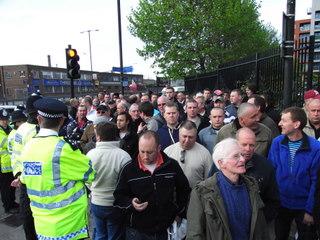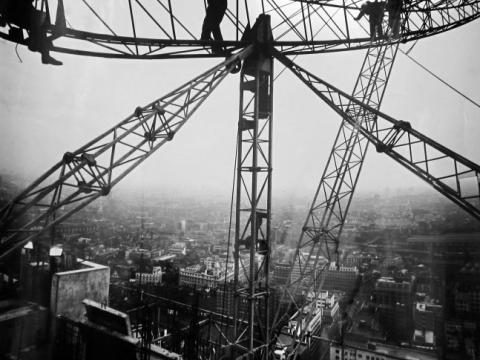Workers at the Total refinery at Lindsay have undertaken strike action in support of a demonstration in London for direct employment and against undercutting and subcontracting on construction projects.

Hundreds of building workers, electricians and workers in related trades assembled outside the Olympic construction site on Wednesday to call for jobs to be available to those in the local community, through direct employment on a PAYE basis and in line with agreed pay and conditions.
Local workers were joined by those from around the country who travelled to the protest in order to demonstrate for access to construction projects and against practices of undercutting workforces with cheaper agency labour, often imported from abroad. Electrician Paul Hunter, from Grimsby, was quoted by Humber Business as saying, “We met about 600 other workers in London to show our support. We want all workers to get the same rate of pay, no matter which country they are from.” Workers at the demonstration stressed that the issue was the erosion of the NAECI agreement through paying imported labour cheaper rates, or employing foreign workers under different conditions, not the presence of foreign workers themselves.
The issue of the blacklisting of building workers and electricians was also raised. The existence of an industry blacklist of militant workers – long suspected to exist by those on it – was confirmed recently with the seizure of a list of workers which large construction firms such as Balfour Beatty paid to access.
The demonstration was met with a solidarity walkout at the Total Lindsay Oil Refinery, which was at the centre of the wave of wildcat strike action earlier this year. The strikers travelled to the nearby ConocoPhillips Oil Refinery and set up a picket in an attempt to spread the protest. One ConocoPhillips employee was quoted by Humber Business as saying “We won’t cross the picket line as long as it is there. This issue affects all trades and all workers.”
The wildcat actions earlier this year received considerable media attention. The coverage was unusual by comparison to the usual treatment of industrial action from the mainstream media. The increased interest was down to the fact the story could be spun to stir up hostility towards immigrants by papers with a line in doing so. More liberal sources claimed that the protests were xenophobic or racist in nature. Whilst nationalist sentiments undoubtedly represent a current of the movement, a more commonsense class view came to the fore as the strikes developed. This was visible in the demands of the LOR workers, which were decided on in a mass meeting and were clearly anti-racist.
A video of the Olympic site protest with extensive interviews with the workers can be seen here.






Comments